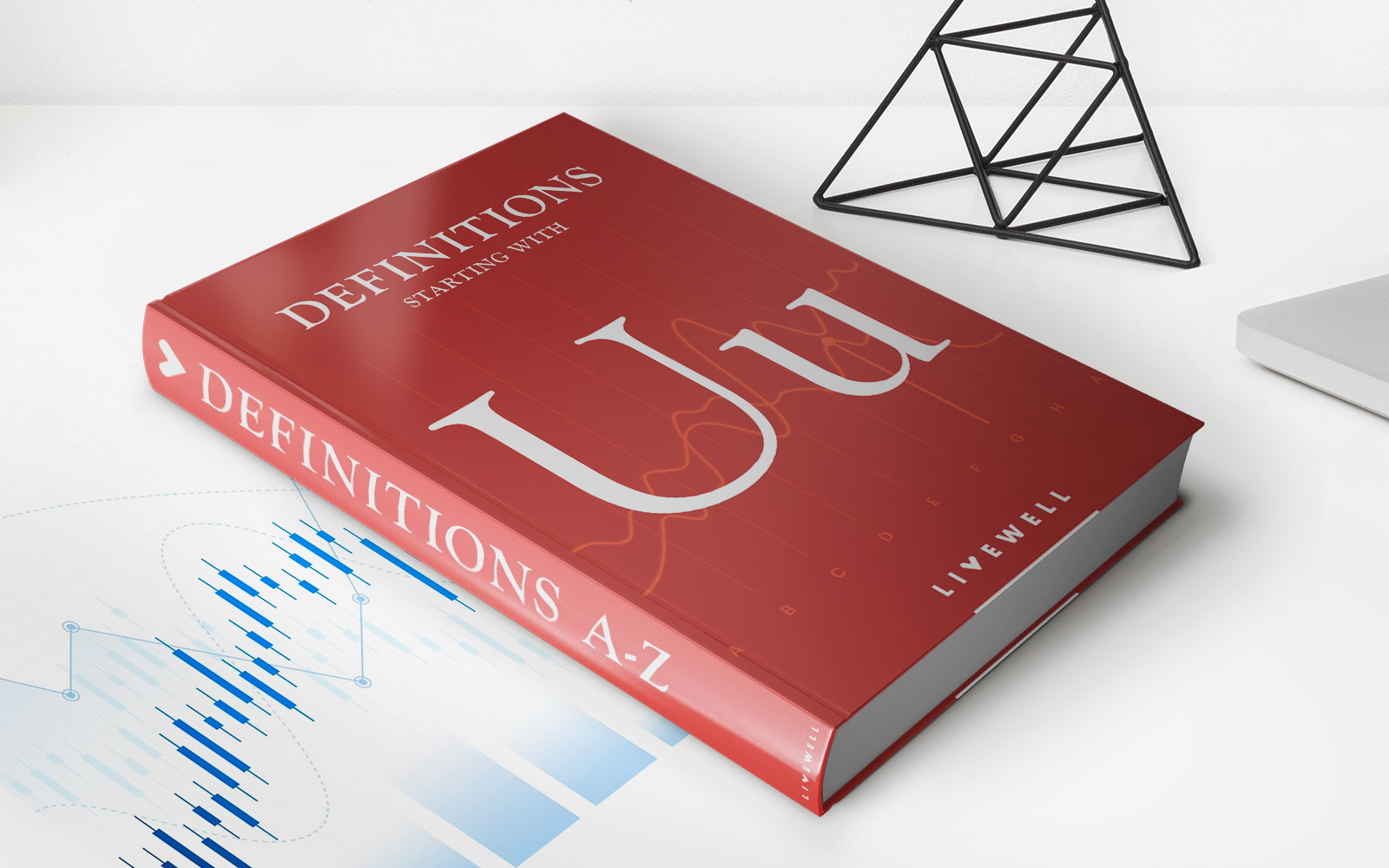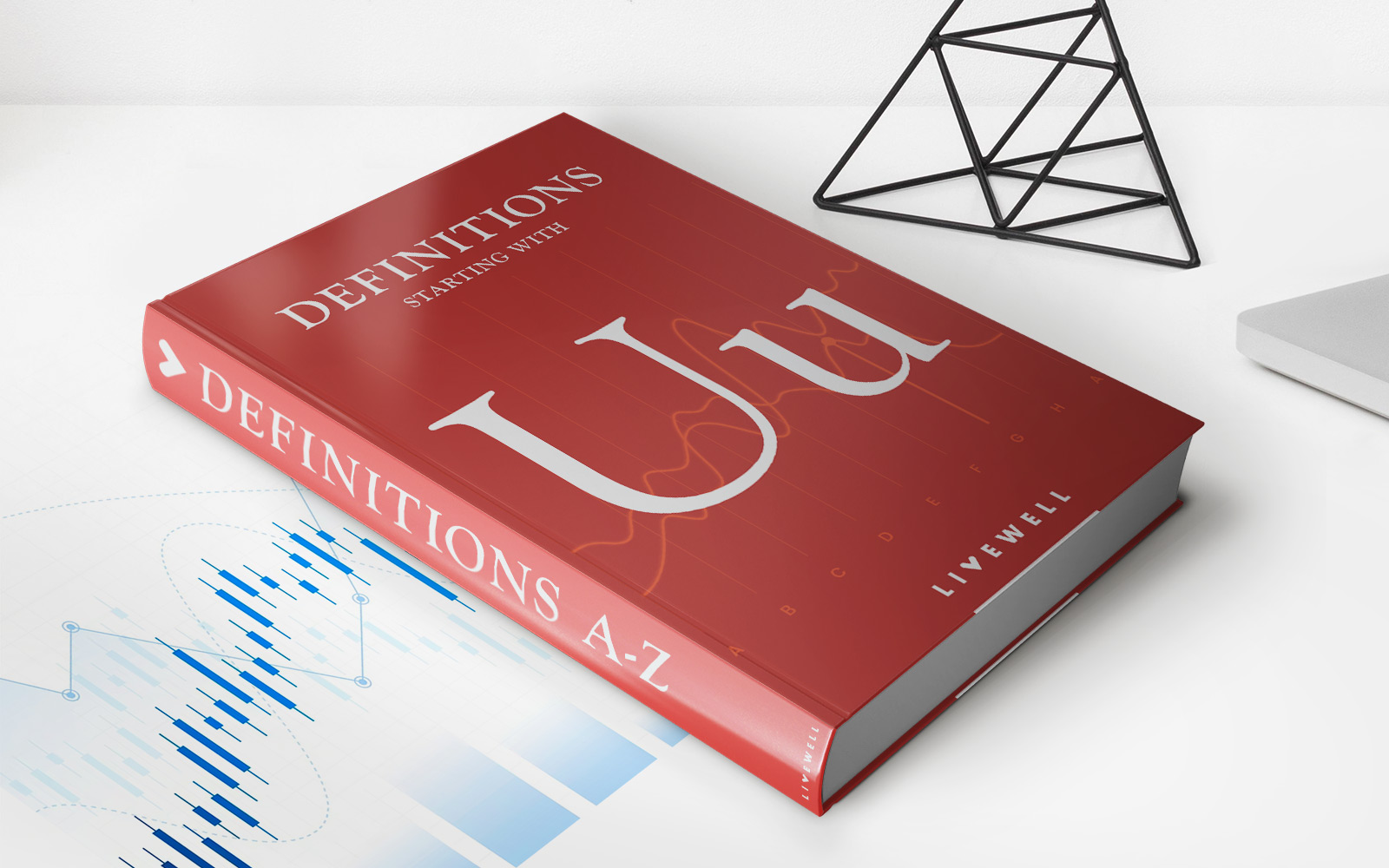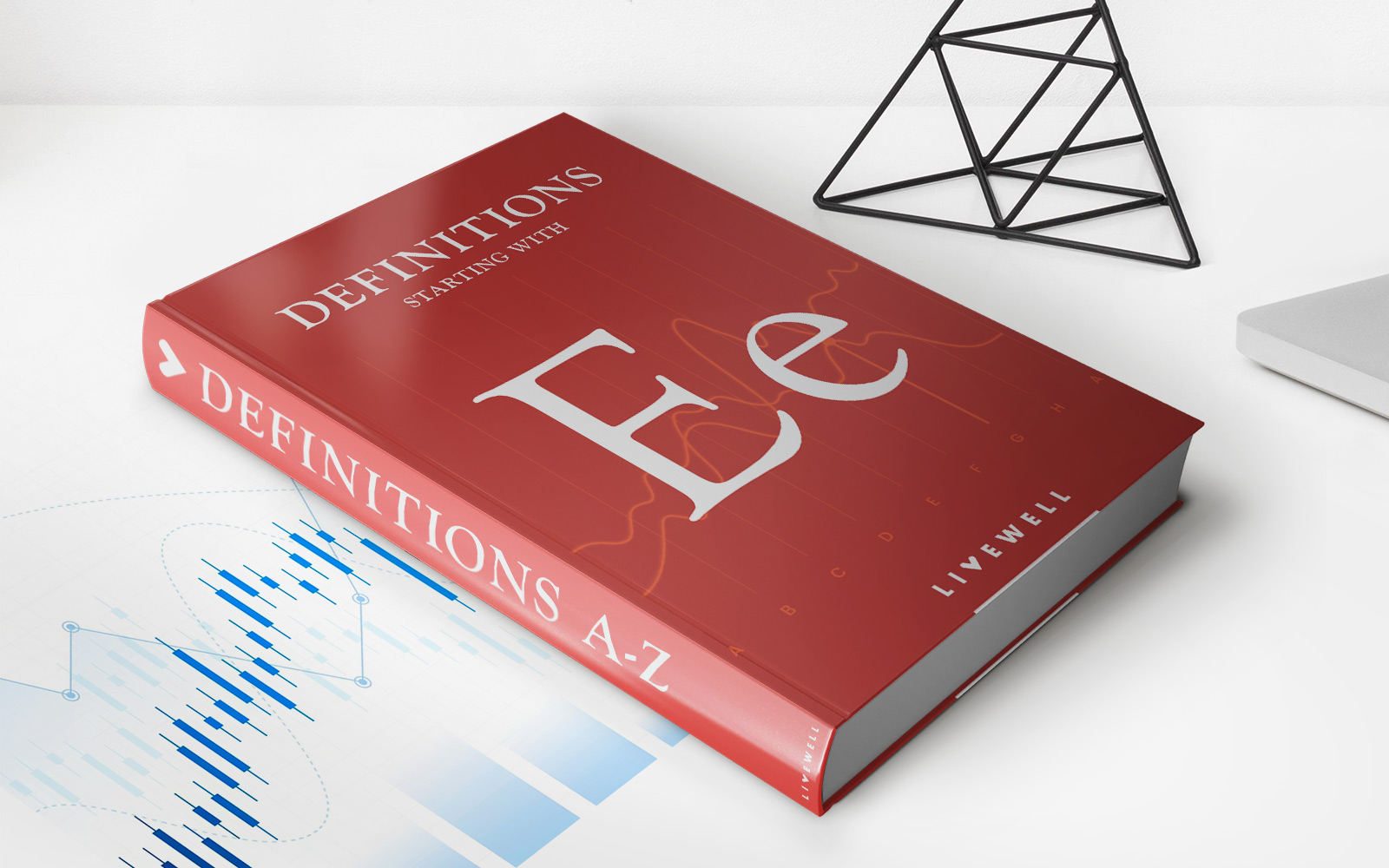

Finance
What Is The Unified Tax Credit
Modified: January 15, 2024
Discover what the unified tax credit is, its significance in finance, and how it impacts your financial planning. Learn more about this essential aspect of taxes.
(Many of the links in this article redirect to a specific reviewed product. Your purchase of these products through affiliate links helps to generate commission for LiveWell, at no extra cost. Learn more)
Table of Contents
- Introduction
- Definition of Unified Tax Credit
- Purpose of Unified Tax Credit
- History of Unified Tax Credit
- Eligibility for Unified Tax Credit
- Calculation of Unified Tax Credit
- Utilizing the Unified Tax Credit
- Limitations and Restrictions of Unified Tax Credit
- Impact of Unified Tax Credit on Taxpayers
- Conclusion
Introduction
Welcome to the world of finance, where understanding the intricacies of taxes and credits is key to maximizing your financial benefits. In this article, we will delve into the concept of the Unified Tax Credit, a powerful tool that can potentially save you a considerable amount of money on your taxes.
taxes can be complex and overwhelming, with numerous credits and deductions available to taxpayers. The Unified Tax Credit is one such credit, designed to provide individuals with a tax break by reducing the amount of tax owed to the government. It is important to understand how this credit works and how it can benefit you based on your financial situation.
The Unified Tax Credit is primarily associated with estate planning, specifically the Federal Estate Tax. The Federal Estate Tax is a tax imposed on the transfer of assets from a deceased individual to their beneficiaries. It is important to note that this tax only applies to individuals with high net worth and does not affect the majority of taxpayers.
Although the Unified Tax Credit is primarily related to estate planning, it also plays a significant role in the realm of gift taxes. It allows individuals to give gifts and transfer assets throughout their lifetime, without incurring a tax liability up to a certain amount. This serves as a powerful tool for individuals looking to transfer their wealth to future generations.
Overall, the Unified Tax Credit provides individuals with an opportunity to reduce their tax liability and retain more of their hard-earned money. In the following sections, we will explore the definition of the Unified Tax Credit, its purpose, history, eligibility criteria, calculation method, utilization strategies, limitations, and the impact it has on taxpayers. So, let’s dive deeper into the world of the Unified Tax Credit and uncover its benefits!
Definition of Unified Tax Credit
The Unified Tax Credit is a tax provision that provides individuals with a credit towards their tax liability. It is primarily associated with estate and gift taxes, helping individuals reduce the amount of taxes owed on transfers of wealth.
The Unified Tax Credit combines the tax exemption for gifts made during an individual’s lifetime, known as the Gift Tax Exemption, and the tax exemption for assets transferred upon their death, known as the Estate Tax Exemption. By combining these two exemptions into one unified credit, individuals can optimize their tax planning and potentially minimize their tax burden.
The Unified Tax Credit operates on a dollar-for-dollar basis, meaning that the credit directly reduces the amount of taxes owed. For example, if an individual has a Unified Tax Credit of $500,000 and their tax liability is $600,000, the credit will reduce the tax liability to $100,000.
The amount of the Unified Tax Credit is subject to change each year as it is adjusted for inflation. It is important to consult the latest tax laws and regulations to determine the current credit amount and any applicable limitations.
It is worth noting that the Unified Tax Credit is a federal provision and may differ from state-level tax regulations. Some states may have their own separate credits or exemptions for estate and gift taxes, which may significantly impact the overall tax planning strategy.
In summary, the Unified Tax Credit is a mechanism that combines the exemptions for gift and estate taxes into one credit, allowing individuals to reduce their overall tax liability. It provides a valuable opportunity for individuals to effectively manage their wealth transfer and potentially lower the amount of taxes they owe.
Purpose of Unified Tax Credit
The Unified Tax Credit serves several important purposes, primarily related to estate planning and wealth transfer. Let’s explore the key purposes of this tax credit:
1. Estate Tax Planning: One of the primary purposes of the Unified Tax Credit is to help individuals with high net worth plan for their estate taxes. By utilizing the credit, individuals can minimize or even eliminate the estate tax burden on their beneficiaries. This allows individuals to efficiently pass on their wealth while preserving the value of their estate.
2. Wealth Transfer: The Unified Tax Credit enables individuals to transfer their wealth to their desired recipients, such as family members or charitable organizations, without incurring gift taxes. This promotes intergenerational wealth transfer and allows individuals to support causes or loved ones with financial resources.
3. Reduction of Tax Liability: By utilizing the Unified Tax Credit, individuals can reduce the amount of tax they owe on their estate or gifts. This can result in significant tax savings and allow individuals to allocate their financial resources in a more efficient and strategic manner.
4. Flexibility in Estate Planning: The Unified Tax Credit provides individuals with flexibility in their estate planning strategies. They can leverage the credit to structure their estate in a way that aligns with their wishes and long-term goals. This includes distributing assets, setting up trusts, and considering the implications of the tax credit on the overall estate plan.
5. Promotion of Charitable Giving: The Unified Tax Credit encourages and incentivizes individuals to engage in philanthropy and charitable giving. By taking advantage of the credit, individuals can make substantial contributions to charitable organizations during their lifetime or through their estate plan, helping to support causes they care about while reducing their tax liability.
Overall, the purpose of the Unified Tax Credit is to provide individuals with a strategic tool for estate planning, wealth transfer, and tax reduction. It gives individuals the opportunity to structure their financial affairs in a way that aligns with their goals and priorities while minimizing the impact of estate and gift taxes.
History of Unified Tax Credit
The history of the Unified Tax Credit dates back to the early 20th century when the federal government introduced estate and gift taxes to generate revenue and address concerns related to wealth accumulation across generations.
Previously, estate and gift taxes operated independently, with separate exemption limits and tax rates. In 1976, the concept of a unified credit was introduced as part of the Tax Reform Act. The unified credit replaced the previous system by combining the exemptions for estate and gift taxes into a single credit, providing individuals with greater flexibility and simplicity in their tax planning.
Over the years, the Unified Tax Credit has undergone various changes and revisions to adapt to evolving tax laws and economic conditions. One significant change occurred in 2010, when the Tax Relief, Unemployment Insurance Reauthorization, and Job Creation Act increased the unified credit and set it at $5 million per person, adjusted for inflation. This change provided a significant boost to the credit, resulting in greater tax savings for individuals.
In 2012, the American Taxpayer Relief Act made the changes to the Unified Tax Credit permanent, ensuring that the credit remained a valuable tool for estate planning and wealth transfer. It also introduced the concept of “portability,” allowing a surviving spouse to utilize any unused portion of their deceased spouse’s unified credit.
Since then, the Unified Tax Credit has continued to undergo annual adjustments for inflation. As of the tax year 2022, the unified credit stands at $11.7 million per individual, effectively doubling for married couples, assuming proper estate planning strategies are utilized.
It is important to stay updated with the latest tax laws and regulations to ensure compliance and take advantage of any changes or adjustments to the Unified Tax Credit. Tax professionals and estate planning experts can provide guidance on leveraging the credit effectively while keeping in mind broader tax and financial planning goals.
Overall, the history of the Unified Tax Credit showcases its evolution from a fragmented system to a comprehensive credit that simplifies the estate and gift tax planning process. It has provided individuals with greater opportunities to optimize their tax strategies, preserve wealth, and transfer assets to future generations in a tax-efficient manner.
Eligibility for Unified Tax Credit
Eligibility for the Unified Tax Credit is primarily determined by an individual’s estate value and their intention to transfer assets through gifts or upon their death. Here are the key factors that determine eligibility:
1. Estate Value: To be eligible for the Unified Tax Credit, an individual must have an estate value that exceeds the estate tax exemption limit set by the federal government. The current exemption amount is $11.7 million per individual for the tax year 2022. Married couples can effectively double this exemption amount by utilizing proper estate planning techniques.
2. Intention to Transfer Assets: The Unified Tax Credit applies to individuals who plan to transfer assets during their lifetime through gifts or upon their death through their estate plan. It allows individuals to utilize the credit to offset any potential estate or gift tax liability that may arise during the transfer of their assets.
3. U.S. Citizenship or Resident Status: The Unified Tax Credit is applicable to individuals who are U.S. citizens or legal residents for estate tax purposes. Non-resident aliens may have different tax rules and exemptions for estate taxes, and it is essential to consult with an expert in international tax matters to understand the specific rules that apply to them.
It is important to note that the Unified Tax Credit is subject to change as tax laws evolve. It is recommended to consult with a qualified tax professional or estate planning attorney to understand the current eligibility criteria and any recent updates.
Additionally, it is crucial to keep in mind that eligibility for the Unified Tax Credit does not guarantee a complete exemption from estate or gift taxes. While the credit can significantly reduce or eliminate tax liability, it is essential to carefully plan and structure wealth transfers to optimize the benefits of the credit.
Lastly, the eligibility criteria for the Unified Tax Credit may vary from state to state. States may have their own separate estate tax exemptions or credits, which can impact overall eligibility and planning strategies. It is important to consider both federal and state tax regulations when determining eligibility and planning for estate and gift taxes.
In summary, individuals with a significant estate value and the intention to transfer assets through gifts or their estate are generally eligible for the Unified Tax Credit. Understanding the eligibility criteria and working with professionals can help individuals navigate the complexities of tax planning and make the most of this valuable credit.
Calculation of Unified Tax Credit
The calculation of the Unified Tax Credit involves determining the tax liability related to estate and gift transfers and then applying the credit to reduce or eliminate that liability. Here is an overview of how the Unified Tax Credit is calculated:
1. Estate Tax Calculation: If an individual’s estate value exceeds the federal estate tax exemption limit, which is currently $11.7 million for the tax year 2022, the estate may be subject to the estate tax. The estate tax is calculated based on a progressive tax rate that ranges from 18% to 40%, depending on the value of the estate.
2. Gift Tax Calculation: The Unified Tax Credit also applies to gift transfers made during an individual’s lifetime. If an individual exceeds the annual gift tax exclusion amount, which is $15,000 per recipient for the tax year 2022, the excess amount is considered taxable. The gift tax is also calculated at the same progressive tax rates as the estate tax.
3. Unified Credit Application: After determining the estate or gift tax liability, the Unified Tax Credit is applied to reduce that liability. The credit is subtracted from the total tax owed, directly lowering the tax liability on the estate or gift transfer.
4. Credit Limit: The Unified Tax Credit has a dollar amount limit. For the tax year 2022, the credit is $11.7 million, equal to the federal estate tax exemption. Therefore, if an individual’s estate or gift tax liability is less than or equal to the credit amount, they will owe no tax at all. However, if their tax liability exceeds the credit amount, they will owe tax on the excess amount.
It is important to consult with a tax professional or estate planning attorney for accurate and specific calculations based on your individual scenario. They can consider additional factors such as the lifetime exemption usage, adjustments for inflation, and any specific rules or deductions that may apply.
Moreover, it is worth noting that the Unified Tax Credit calculation may vary depending on the tax laws and regulations in different jurisdictions. State-level taxes and exemptions can impact the overall calculation and should be considered alongside federal guidelines.
By understanding the calculation of the Unified Tax Credit, individuals can assess their potential tax liability and evaluate the efficacy of their estate planning strategies. Proper planning and consultation with professionals can help optimize the utilization of the credit and ensure compliance with relevant tax laws.
Utilizing the Unified Tax Credit
Utilizing the Unified Tax Credit effectively involves strategic planning and taking advantage of opportunities to maximize the benefits of the credit. Here are some key considerations and strategies for utilizing the Unified Tax Credit:
1. Gifting Strategies: One way to leverage the Unified Tax Credit is through strategic gifting. By making annual gifts to family members or charitable organizations up to the annual gift tax exclusion amount (currently $15,000 per recipient for the tax year 2022), individuals can reduce the size of their estate over time and potentially minimize estate tax liability. Additionally, individuals can make larger gifts, utilizing a portion of their lifetime gift tax exemption, and still benefit from the Unified Tax Credit.
2. Irrevocable Trusts: Establishing irrevocable trusts can be an effective strategy for utilizing the Unified Tax Credit. By transferring assets into a trust, individuals can remove those assets from their taxable estate while still maintaining control over how the assets are used and distributed. This can help optimize the utilization of the Unified Tax Credit and minimize estate tax liability.
3. Spousal Portability: Married couples can make use of spousal portability to maximize the Unified Tax Credit. If one spouse passes away and does not utilize their full Unified Tax Credit, the unused portion can be transferred to the surviving spouse, effectively doubling the available credit. This allows the surviving spouse to potentially take advantage of a larger credit to offset future estate tax liability.
4. Charitable Giving: Making charitable contributions during your lifetime or through your estate plan can help reduce estate tax liability and maximize the benefit of the Unified Tax Credit. Charitable gifts are generally exempt from gift and estate taxes, allowing individuals to transfer wealth to charitable organizations while potentially minimizing their tax burden.
5. Estate Freezing Techniques: Implementing estate freezing techniques, such as Grantor Retained Annuity Trusts (GRATs) or Family Limited Partnerships (FLPs), can be beneficial for utilizing the Unified Tax Credit. These techniques allow individuals to transfer appreciating assets out of their taxable estate while retaining some control and generating income. By leveraging these strategies, individuals can potentially maximize the benefits of the Unified Tax Credit.
It is important to work with knowledgeable professionals, such as tax advisors, estate planning attorneys, and financial planners, to develop a comprehensive plan that aligns with your specific goals and circumstances. They can help navigate the complexities of estate planning, tax laws, and regulations to ensure that you make the most of the Unified Tax Credit.
Remember that tax laws can change, and it is essential to stay informed about the latest regulations and exemptions to effectively utilize the Unified Tax Credit in your financial and estate planning strategies.
Limitations and Restrictions of Unified Tax Credit
While the Unified Tax Credit offers valuable tax-saving opportunities, it is important to be aware of its limitations and restrictions. Understanding these limitations can help individuals plan effectively and make informed decisions. Here are some key limitations and restrictions of the Unified Tax Credit:
1. Limited to Wealthier Individuals: The Unified Tax Credit primarily benefits individuals with high net worth. It is designed to address estate and gift tax concerns for those with substantial assets. Individuals with smaller estates may not be eligible or may not fully utilize the credit due to the higher exemption limits compared to their estate value.
2. Subject to Exemption Limits: The Unified Tax Credit is subject to exemption limits, which change annually and are adjusted for inflation. If an individual’s estate value exceeds the exemption limit, they may still be liable for estate taxes, even after utilizing the available credit.
3. State-Level Variations: While the Unified Tax Credit applies at the federal level, individual states may have their own estate and gift tax laws. Some states have different exemption limits, tax rates, or no estate tax at all. This can impact the overall planning and utilization of the Unified Tax Credit, as individuals need to consider both federal and state-level regulations.
4. Complex Tax Planning: Optimizing the Unified Tax Credit requires careful tax planning and expertise. Individuals may need the assistance of tax advisors, estate planning attorneys, or financial planners to navigate the complexities of estate and gift tax laws, exemptions, and strategies. It is crucial to seek professional advice to ensure compliance and maximize the benefits of the credit.
5. Changes in Tax Laws: Tax laws are subject to change, and this includes the Unified Tax Credit. The credit amount, exemption limits, and other related provisions can be modified by new legislation. It is important to stay updated on the latest tax laws and consult with professionals to understand any changes that may impact eligibility or planning strategies.
6. Time Constraints: The utilization of the Unified Tax Credit requires proactive planning and timely action. Individuals need to plan well in advance to take advantage of gifting opportunities, establish trusts, or employ other estate planning strategies. Waiting until the last minute may limit the potential benefits of the credit.
It is crucial to work closely with tax and estate planning professionals who can provide tailored guidance based on individual circumstances. They can help individuals navigate the limitations and restrictions of the Unified Tax Credit, optimize their planning, and ensure compliance with relevant tax laws.
By being aware of these limitations and restrictions, individuals can make informed decisions about their estate and gift tax planning and effectively utilize the Unified Tax Credit to their advantage.
Impact of Unified Tax Credit on Taxpayers
The Unified Tax Credit has a significant impact on taxpayers, particularly those with substantial assets and a need for estate planning. Here are some key ways in which the Unified Tax Credit can affect taxpayers:
1. Tax Savings: The primary impact of the Unified Tax Credit is the potential for significant tax savings. By utilizing the credit effectively, individuals can reduce or eliminate their estate or gift tax liability. This can result in substantial savings and allow taxpayers to retain more of their wealth for themselves, their families, or charitable causes.
2. Facilitating Wealth Transfer: The Unified Tax Credit facilitates the transfer of wealth from one generation to the next. It provides individuals with the opportunity to pass on their assets to their desired heirs or charitable organizations while minimizing the tax burden on the transfers. This can help taxpayers achieve their legacy and philanthropic goals while preserving the value of their estate.
3. Estate Planning Strategies: The Unified Tax Credit encourages taxpayers to engage in strategic estate planning. To fully utilize the credit, individuals may employ various estate planning techniques, such as establishing trusts, making lifetime gifts, or utilizing spousal portability. These strategies can help taxpayers protect and distribute their assets according to their wishes, while also minimizing estate tax liability.
4. Financial Flexibility: The ability to reduce estate tax liability through the Unified Tax Credit provides taxpayers with greater financial flexibility. They have the opportunity to allocate their resources as per their goals and priorities during their lifetime, knowing that the estate tax burden on their heirs can be minimized through the credit. This can enable individuals to make important financial decisions with confidence and peace of mind.
5. Encouraging Charitable Giving: The Unified Tax Credit promotes charitable giving by incentivizing taxpayers to include charitable organizations in their estate plans. By utilizing the credit, taxpayers can support causes they care about while potentially lowering their estate tax liability. This can have a positive impact on the community by encouraging philanthropy and supporting charitable initiatives.
6. Complexity of Tax Planning: The impact of the Unified Tax Credit on taxpayers also entails the complexity of tax planning. Maximizing the benefits of the credit requires careful consideration of individual circumstances, tax laws, exemptions, and strategies. Taxpayers may need to rely on professional guidance from experts in tax and estate planning to navigate these complexities effectively.
Ultimately, the impact of the Unified Tax Credit on taxpayers is significant, offering the potential for tax savings, facilitating wealth transfer, and providing financial flexibility. By understanding the implications of the credit, taxpayers can develop effective estate plans, optimize their tax strategies, and make informed decisions regarding the transfer and preservation of their assets.
Conclusion
The Unified Tax Credit is a powerful tool in estate planning and wealth transfer, aiming to reduce the tax burden on individuals with substantial assets. Through its combined estate and gift tax exemptions, the Unified Tax Credit provides taxpayers with opportunities to maximize tax savings, facilitate intergenerational wealth transfer, and support charitable giving.
By effectively utilizing the Unified Tax Credit, individuals can minimize or even eliminate their estate and gift tax liability, allowing them to preserve more of their hard-earned wealth for themselves, their families, or philanthropic endeavors.
However, it is important to recognize that the Unified Tax Credit comes with limitations and restrictions. It primarily benefits individuals with high net worth, and its impact is subject to changing tax laws and regulations. To make the most of the credit, taxpayers need to engage in proactive tax planning, consider complex estate planning strategies, and stay updated on the latest tax laws.
Consulting with tax professionals, estate planning attorneys, and financial advisors is crucial for maximizing the benefits of the Unified Tax Credit. They can provide tailored guidance, assess individual circumstances, and help develop comprehensive estate plans that align with the goals and objectives of taxpayers.
In conclusion, the Unified Tax Credit offers significant opportunities for taxpayers to optimize their tax planning, transfer their wealth, and support charitable causes. By being proactive, knowledgeable, and attentive to individual circumstances, taxpayers can navigate the complexities of the credit, minimize tax liability, and create a lasting legacy for future generations.














